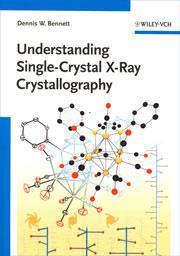Understanding single-crystal x-ray crystallography
Understanding single-crystal x-ray crystallography
Dennis Bennett
Weinheim, Germany: Wiley-VCH 2010 | 831pp | ? 115.00 (HB)
ISBN 9783527326778
Reviewed by Bill Clegg

I’ll begin with the minor reservations. There is a sprinkling of typographical errors and odd spellings, and the angstrom symbol (

) is frequently missing. Notable omissions from the treatment include the sources of x-rays and non-merohedral twinning. The description of direct methods for solving structures is largely old-fashioned, with little on dual-space methods and nothing at all on charge flipping, and the account of macromolecular methods is rather out of date. Occasional statements are quite incorrect: for example that the NaCl structure ’is clearly not’ face-centred, space group P21is ’encountered rarely for organic structures’ (nearly 20 000 in the Cambridge Structural Database!), and that static disorder has the same effect as thermal vibration.
Strangest of all, the cover description suggests a text suitable for readers ’with only modest mathematical backgrounds’, but they will have a shock - the book is laced with detailed equations and derivations. Yes, it is ’self-contained’, but hardly ’easily comprehensible’.
That said, the treatment is certainly thorough and systematic. In the UK at least, where university courses on crystallography are rarely more than a few lectures, the book is unlikely to appeal to students other than those on specialist advanced courses or relevant research training, but I would recommend it as a reference book for practising crystallographers, and as a comprehensive manual of fundamental aspects of the subject for scientists who make use of crystallographic methods and results obtained through other people. This is particularly the case in its extensive coverage of symmetry and the theory of x-ray diffraction.
It is not necessary to follow all the intricate mathematical treatment of matrices, Fourier summation, statistics and so on, in order to derive benefit from the clearly written text and the good range of worked examples.












No comments yet